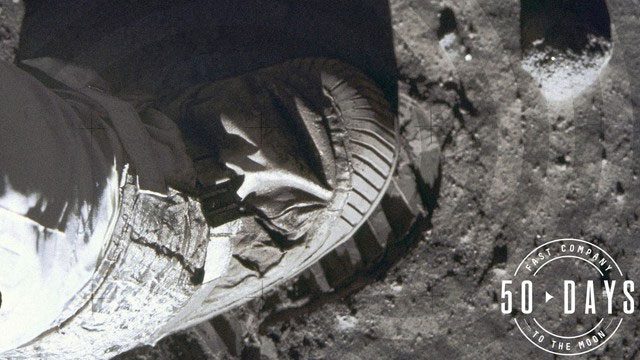In the history of human space exploration, the Apollo program is undoubtedly a glorious chapter.
On July 16, 1969, Apollo 11 was launched from Kennedy Space Center in Florida, USA, marking humanity’s first journey to the Moon. Armstrong and Aldrin became the first individuals to set foot on the lunar surface. However, with this achievement came numerous doubts and conspiracy theories.
One of the most famous interviews occurred in 2002 when a man named Bart Sibrel publicly questioned the Apollo missions and demanded that Aldrin (who was 72 at the time) swear on the Bible. Aldrin refused the demand, and Sibrel’s persistent harassment (accusing Aldrin of lying about the Apollo 11 moon landing) eventually led Aldrin to punch him out of frustration.
This incident immediately became the biggest news in America. Countless people wondered why Aldrin dared not swear on the Bible. Had Aldrin really never set foot on the Moon? Some even claimed they had “irrefutable evidence” that could expose the truth. So, did humans actually land on the Moon?

NASA astronaut and the flag on the Moon.
Question 1: Why does the flag appear to wave?
There are several explanations for why the American flag seems to be waving during the Apollo moon landing:
First, although the Moon has no atmosphere and thus no wind, engineers wanted to ensure that the flag would appear to wave in the airless environment. Therefore, it was designed to be unfurled and included a special flagpole. This pole is different from Earth designs in that it has a horizontal crossbar at the top. The purpose of this crossbar is to hold the flag outstretched.
Second, when the astronauts planted the flag on the lunar surface, they may have used too much force, causing the flagpole to sway. Since the Moon lacks air resistance, this oscillation lasts longer than it would on Earth, creating the illusion of a waving flag. Additionally, the astronauts may have struggled while erecting the flag, leading to the horizontal bars not being fully extended. This caused parts of the flag to overlap, creating folds. Although there is no wind on the Moon, these folds also give the illusion that the flag is waving. The combined effect of these factors creates the effect we see.

The Moon has no wind, so why does the flag appear to wave?
Question 2: Why are there no stars in the photos?
The main reason you don’t see stars in the photos is due to the camera settings. When the astronauts took pictures on the lunar surface, their cameras were set to capture the bright surface of the Moon rather than the faint starlight in the sky. Since the Moon has no atmosphere, sunlight directly illuminates the lunar surface, making it very bright.
To clearly capture the surface of the Moon and the astronauts, the camera’s exposure time had to be short, making it impossible to photograph relatively dim stars. Furthermore, it should be noted that most activities during the lunar landing occurred during the “daytime” on the Moon. Due to the strong sunlight and reflection, the light from the stars could not be captured because it is too weak.
Additionally, the film used in the Apollo missions was not regular film. It was specially customized by Kodak for space missions, with unique emulsions and film bases that allowed it to perform well in the extreme temperatures of the lunar surface.
Question 3: Astronaut footprints inconsistent with their spacesuits

NASA astronaut’s footprint on the Moon.
“Footprints on the Moon” are an important witness and memorial to the Apollo moon landing, and they are also the focal point of attacks from conspiracy theorists. Since there is no air on the Moon, strong air currents do not form, and the lunar dust particles are not weathered or eroded, thus retaining their sharp, angular shapes. Such particles easily leave clear footprints.
Because the Moon lacks an atmosphere and liquid water, these footprints can last for millions of years. There are several reasons why the astronauts’ footprints do not match the soles of their spacesuits.
First, during the Apollo 11 mission, Armstrong and the other astronauts wore Apollo spacesuits, but they also wore overshoes (galoshes) with special soles, leaving imprints that are identical to the footprints on the Moon.
Second, these galoshes were not displayed in museums because they were left on the Moon to reduce the weight of the lunar module’s ascent stage.

There are several reasons why the astronauts’ footprints do not match their spacesuits.
Question 4: How did they pass through the Van Allen radiation belts?
To reach the Moon, astronauts had to pass through the Van Allen radiation belts. The Van Allen radiation belts are doughnut-shaped layers of radiation created by the accumulation of a large number of charged particles surrounding Earth in near-Earth space, discovered by American physicist James Van Allen and named after him.
However, NASA implemented several measures to protect astronauts from radiation during the Apollo missions.
First, the trajectory of the Apollo spacecraft was carefully designed to pass through thinner areas of the radiation belts, thereby reducing the radiation dose received by the astronauts. Additionally, the design of the Apollo spacecraft included radiation shielding, particularly using aluminum layers in critical areas, to further mitigate the radiation impact on the astronauts.
Second, the Apollo spacecraft passed through the Van Allen radiation belts in a very short time, which also helped limit the total radiation dose received by the astronauts. In fact, the radiation dose received by the astronauts during the mission was equivalent to that of some medical X-rays on Earth and was much lower than levels that could cause serious harm to the human body.
Thus, despite the high intensity of radiation in the Van Allen radiation belts, through careful mission planning and spacecraft design, astronauts were able to safely traverse this area and complete their journey to the Moon.

The Van Allen belts were discovered by American physicist James Van Allen.
During the Apollo 11 moon landing mission, Luna 15, a probe from the Soviet Union, also landed not far away. Furthermore, to avoid a collision between the two lunar vehicles, the Soviet Union disclosed the orbital parameters of Luna 15 at the request of the United States.
Moreover, modern lunar probes, such as India’s Chandrayaan-2 and China’s Chang’e-2, have captured images of the remnants of the Apollo landing sites, including the footprints of astronauts and the traces of the lunar lander. These compelling pieces of evidence validate the existence and authenticity of the Apollo moon landing missions.




















































